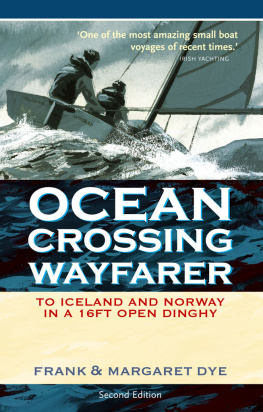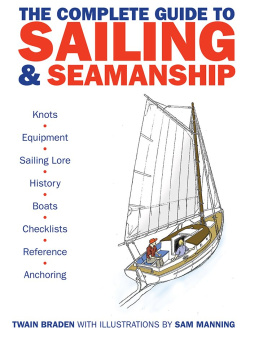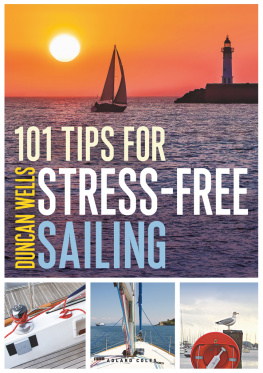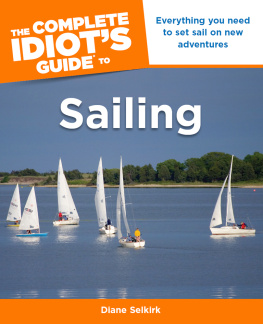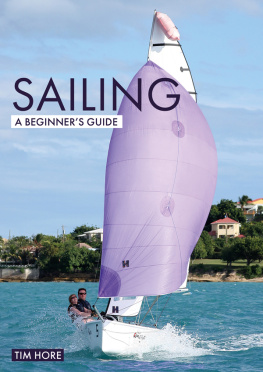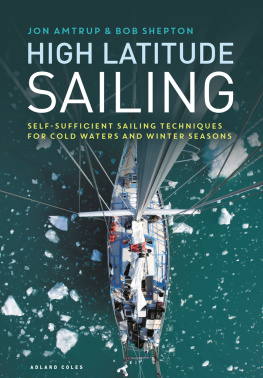
Published by Adlard Coles Nautical an imprint of Bloomsbury Publishing Plc 50 Bedford Square, London WC1B 3DP
www.adlardcoles.com
This electronic edition published in 2014 by Bloomsbury Publishing Plc
Copyright Adlard Coles Nautical 2014
First edition 2014
ISBN 978-1-4081-8800-2
All rights reserved
You may not copy, distribute, transmit, reproduce or otherwise make available this publication (or any part of it) in any form, or by any means (including without limitation electronic, digital, optical, mechanical, photocopying, printing, recording or otherwise), without the prior written permission of the publisher. Any person who does any unauthorised act in relation to this publication may be liable to criminal prosecution and civil claims for damages
The right of the author to be identified as the author of this work has been asserted by him in accordance with the Copyright, Designs and Patents Act, 1988.
Produced for Adlard Coles Nautical by Ivy Contract.
Art director: Kevin Knight Senior editor: Judith Chamberlain-Webber Designer: Nicola Liddiard
Note: while all reasonable care has been taken in the publication of this book, the publisher takes no responsibility for the use of the methods or products described in the book.
To find out more about our authors and their books please visit www.bloomsbury.com where you will find extracts, author interviews and details of forthcoming events, and to be the first to hear about latest releases and special offers, sign up for our newsletters here.
Bloomsbury is a trade mark of Bloomsbury Publishing Plc
Contents
Welcome to dinghy sailing
There are a huge number of different facets to dinghy sailing, encompassing everything from gentle after-work pottering on a quiet summers evening to competitive racing right up to Olympic level.
There are as many different motivations for dinghy sailing as there are sailors. While some are unquestionably thrill seekers who revel in pitting their skills against the elements on the windiest of days, others are quiet nature lovers wanting to get closer to the environment. Those with a competitive streak are focussed on winning major championships, or even an Olympic gold medal.
While some hardened enthusiasts from all disciplines of sailing invest huge amounts of time and money on their activities afloat, this is by no means universal and for most participants dinghy sailing is a perfectly manageable activity, both in terms of time and money.
Its also a family-friendly pursuit thats suitable for people of all ages with a little training, children as young as seven or eight can successfully sail alone in a small, singlehanded boat, or crew a larger dinghy. Equally, there are many dinghy sailors who are a decade or more past retirement age, in some of the fastest and most technologically advanced designs.
Its perhaps therefore no surprise that there are many families in which everyone is hooked on dinghy sailing its an experience which all members can share.

High-level racing is the inspiration for some dinghy sailors.
First steps
Most people get their first experience of dinghy sailing through one of three routes: an introduction from a friend who already sails, a course at a local sailing club or watersports centre, or a holiday in the sun.
All are routes that will enable you to get a taste for sailing without needing to invest in your own boat or expensive gear. Indeed, even when you become more experienced its not essential to own a boat every owner of a two-handed dinghy or catamaran needs a crew to help sail it, so competent people are always in demand.
Buying a boat
When it comes to the time that you want to own your first boat, its possible to buy a second-hand dinghy for a three-figure sum, and even well looked after newer models frequently change hands for no more than the price of an ageing second-hand car.

Even quite young children can master basic sailing with a little help.

Some dinghy sailors enjoy cruising, or just pottering around for a few hours on a low-tech boat.
As for other costs, many dinghy sailors use the facilities of a club membership rarely costs more than a few hundred pounds a year for a couple or family, including a place to keep a boat in the dinghy park. Dont worry about being accepted for membership of a club only the most exclusive have waiting lists and most are very welcoming to new members, and run a number of training courses and open days.

Where to sail safely
Launching off a sandy beach onto smooth water with a fair wind and warm sun sounds like sailing perfection. But everything is not always as it appears. The sand may be too soft to push your boat to the water, the water may shelve steeply from the shoreline, rocks may be hidden beneath the surface, or perhaps theres no one to help if things go wrong.
Sailing clubs
Join a sailing club and enjoy the following benefits:
 | The club will be situated in a good sailing location. If you have problems with rigging, launching, landing or simply dont know if it is safe to sail, other members can help. |
 | The club will provide storage for your boat and changing facilities. Most clubs will also provide catering and organise off-the-water social events. |
 | The club will organise regular racing and sailing courses for its members. This is a great way to improve your sailing skills and to make friends. |
 | The club will provide reliable safety boat cover during events. |
Learn to sail on holiday
Beach club holidays with organised dinghy sailing provide great opportunities. You can learn to sail in a warm location with tuition from professionals. You can try a wide range of equipment, with a safety boat on hand. Be aware, though, that what different holiday operators offer can vary greatly. For instance, a specialist sailing company will provide top levels of equipment and tuition that is suitable for all standards. Beach club holidays, on the other hand, cater to a broader recreational market and are not likely to have the same choice of dinghy or catamaran sailing gear.
Warm weather and a relaxed atmosphere can give a great introduction to sailing. Dinghy sailing back home may be different and more challenging, with tidal waters and difficult weather, but you can rest assured it will be just as much fun.
Safety cover
Always sail with safety cover when you are learning (see ), and, if possible, when you are experienced as well. Safety cover should be provided by a qualified safety boat driver who knows how to handle a rescue boat in close proximity to a dinghy, which may be capsized with crew in the water. Beware of rescue by a well-meaning but inexperienced motorboat driver: people who are experienced will be able to manage the propeller and the movement of their boat without inflicting injury.
Next page


